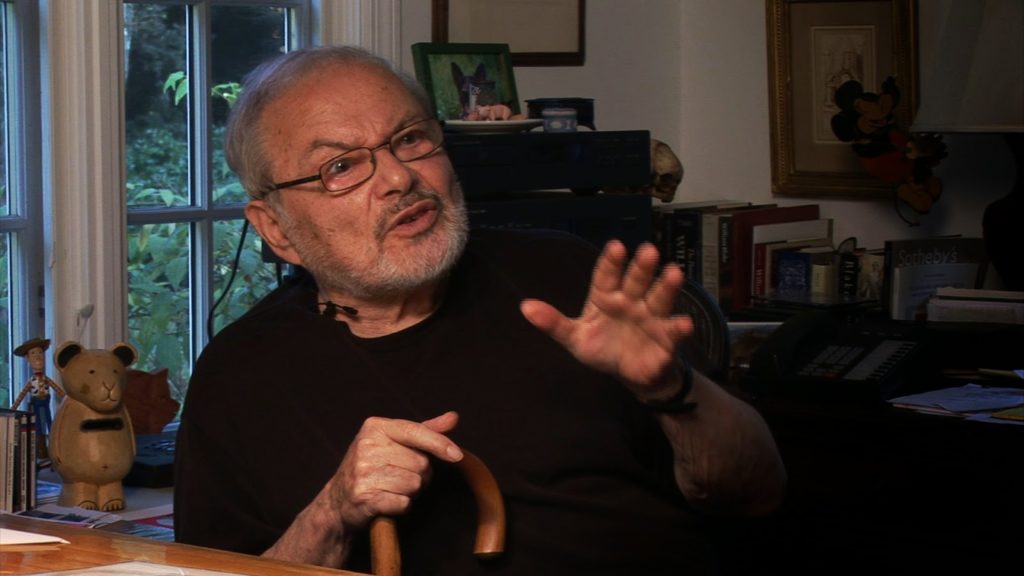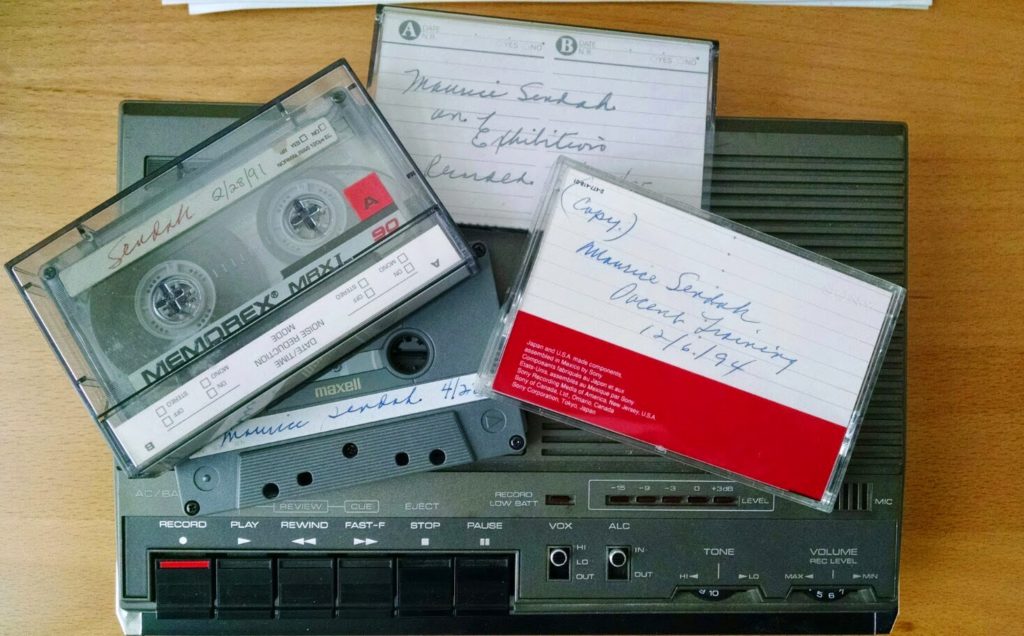For those of you who have seen Peter Dobrin’s recent articles
in the Philadelphia Inquirier (both Sunday‘s and Tuesday‘s), you already know that the Sendak
Collection held here on deposit since 1968 will be leaving us shortly and returning
to the Sendak Foundation in Connecticut.
Our exhibition Sendak in the ‘60s will remain on view
through its scheduled end-date, November 2, so be sure to check it out! There are some amazing pieces from Where
the Wild Things Are and In the Night Kitchen on display, but the ‘60s
was perhaps Sendak’s most varied and inventive period so there’s something for
everyone in there.
in the Philadelphia Inquirier (both Sunday‘s and Tuesday‘s), you already know that the Sendak
Collection held here on deposit since 1968 will be leaving us shortly and returning
to the Sendak Foundation in Connecticut.
Our exhibition Sendak in the ‘60s will remain on view
through its scheduled end-date, November 2, so be sure to check it out! There are some amazing pieces from Where
the Wild Things Are and In the Night Kitchen on display, but the ‘60s
was perhaps Sendak’s most varied and inventive period so there’s something for
everyone in there.
In the meantime, I thought I’d share some behind-the-scenes
memories and reflections of our work with Maurice Sendak over the decades. Tens of thousands of people have enjoyed
Sendak’s work through exhibitions and programs here over almost 50 years, but (at
least for those who haven’t met him) not everyone knows how generous Maurice
was with his time and insights on a personal level. He visited here often, bringing artwork with
him, speaking to docents about his work, and doing lectures and signings of his
latest books for visitors.
memories and reflections of our work with Maurice Sendak over the decades. Tens of thousands of people have enjoyed
Sendak’s work through exhibitions and programs here over almost 50 years, but (at
least for those who haven’t met him) not everyone knows how generous Maurice
was with his time and insights on a personal level. He visited here often, bringing artwork with
him, speaking to docents about his work, and doing lectures and signings of his
latest books for visitors.
 |
| Maurice Sendak in 2007. Photo courtesy of Michael O’Reilly. |
When we interviewed him in 2007, Sendak remembered his first
visits to the Rosenbach in the late ‘60s fondly: “I remember I would lay in Dr.
Rosenbach’s room, and they would bring me in some drawings for a French novel by Fragonard
and there was a big animal fur blanket and I used to lay under it with my
Fragonards all around. Hey—that was
living! Of course, they took it all back
in the morning.” The Rosenbach’s first big Sendak exhibition went up in 1970,
displaying much of Sendak’s work up to that point while also including works by
artists who influenced Sendak that were either borrowed from his personal
collection or from other area museums. Admission
then was $1.50. In a review in Artforum,
critic Selma Lanes (who ten years later would publish a compendious biography
of Sendak) noted how this early retrospective lifted Sendak out of the
easy-to-dismiss “kiddie-book” category to which he had often been consigned,
and placed him within a continuum of inventive illustrators: “During an era
when bold use of color, abstract design, outsize format and showy technical
virtuosity abounded, his work has always remained low-key, curiously
retrograde, and 19th-century in spirit. From the exhibited selections, made by both
the artist and Clive Driver, the Rosenbach’s young curator, Sendak clearly
emerges as a conscientious and respectful student of the past, an innovator
within a long tradition rather than a smasher of stylistic idols. As Sendak himself has put it, ‘I borrowed
techniques and tried to forge them into a personal language.’”
visits to the Rosenbach in the late ‘60s fondly: “I remember I would lay in Dr.
Rosenbach’s room, and they would bring me in some drawings for a French novel by Fragonard
and there was a big animal fur blanket and I used to lay under it with my
Fragonards all around. Hey—that was
living! Of course, they took it all back
in the morning.” The Rosenbach’s first big Sendak exhibition went up in 1970,
displaying much of Sendak’s work up to that point while also including works by
artists who influenced Sendak that were either borrowed from his personal
collection or from other area museums. Admission
then was $1.50. In a review in Artforum,
critic Selma Lanes (who ten years later would publish a compendious biography
of Sendak) noted how this early retrospective lifted Sendak out of the
easy-to-dismiss “kiddie-book” category to which he had often been consigned,
and placed him within a continuum of inventive illustrators: “During an era
when bold use of color, abstract design, outsize format and showy technical
virtuosity abounded, his work has always remained low-key, curiously
retrograde, and 19th-century in spirit. From the exhibited selections, made by both
the artist and Clive Driver, the Rosenbach’s young curator, Sendak clearly
emerges as a conscientious and respectful student of the past, an innovator
within a long tradition rather than a smasher of stylistic idols. As Sendak himself has put it, ‘I borrowed
techniques and tried to forge them into a personal language.’”
That was the first of many Sendak shows over the next four
decades. Later exhibitions would delve
into specific Sendak books (Chicken Soup with Rice or In the Night
Kitchen, for example), or investigate themes and techniques in his artwork
(such as Maurice Sendak, Comic Strip Technique, and Wilhelm Busch in
1993, or the 1986 exhibition Man’s Best Friend about Sendak’s dog
Jennie). Periodically—when a new
exhibition went up or a new Sendak book was published—Sendak would stop by and
speak with our docents. It’s rare for
educators to have access to a living artist whose work they interpret for
visitors, and we’re fortunate that past staff had the foresight to record some
of those sessions on cassette tapes. Listening
to them now, I’m struck by how earnest, warm, and excited Sendak sounded in
those conversations. You can hear him
turning the pages of his picture books as he shows the docents particular illustrations. He clearly wanted our docents to be
well-supplied with information and insights on which to chew. In one conversation he expounded on the
distinction he saw between illustrating a “picture book” (giving Where the
Wild Things Are as an example) and a “story book” (citing Higglety,
Pigglety, Pop!). He likened a
picture book to an opera, where images and texts move back and forth in a kind
of syncopation. But a story book, he
explained, must remain focused on the narrative, noting that the trick is to
add something to the pictures; he said he tried to inject a certain “emotional
coloring” to his pictures for Isaac Bashevis Singer’s Zlateh the Goat to
counterbalance Singer’s dry wit in the text.
In other conversations he comments on his fellow-illustrators, like N.C.
Wyeth (“Complicated feelings. A great
master… but he has somewhat the problem of Arthur Rackham, where he has one style,
that N.C.-Wyeth-look.”), and Dr. Seuss (“a master and a maniac…condemned to
being a best-seller”), as well as various authors like Melville (“You don’t
want [your illustrations] to get in the way of him…he’s a trumpet, a noisy
writer”), Randall Jarrell (“He was one of the few writers I’ve ever worked with
who could…visualize what a book could look like. Very few writers understand the business of
illustrating their books. They just want
nice pictures”), and Isaac Singer (“The best part of the collaboration
was him. The worst part was him”). And, of course, Sendak took many questions
from our docents about everything from his work in theater and opera to his
childhood memories and familial relationships.
decades. Later exhibitions would delve
into specific Sendak books (Chicken Soup with Rice or In the Night
Kitchen, for example), or investigate themes and techniques in his artwork
(such as Maurice Sendak, Comic Strip Technique, and Wilhelm Busch in
1993, or the 1986 exhibition Man’s Best Friend about Sendak’s dog
Jennie). Periodically—when a new
exhibition went up or a new Sendak book was published—Sendak would stop by and
speak with our docents. It’s rare for
educators to have access to a living artist whose work they interpret for
visitors, and we’re fortunate that past staff had the foresight to record some
of those sessions on cassette tapes. Listening
to them now, I’m struck by how earnest, warm, and excited Sendak sounded in
those conversations. You can hear him
turning the pages of his picture books as he shows the docents particular illustrations. He clearly wanted our docents to be
well-supplied with information and insights on which to chew. In one conversation he expounded on the
distinction he saw between illustrating a “picture book” (giving Where the
Wild Things Are as an example) and a “story book” (citing Higglety,
Pigglety, Pop!). He likened a
picture book to an opera, where images and texts move back and forth in a kind
of syncopation. But a story book, he
explained, must remain focused on the narrative, noting that the trick is to
add something to the pictures; he said he tried to inject a certain “emotional
coloring” to his pictures for Isaac Bashevis Singer’s Zlateh the Goat to
counterbalance Singer’s dry wit in the text.
In other conversations he comments on his fellow-illustrators, like N.C.
Wyeth (“Complicated feelings. A great
master… but he has somewhat the problem of Arthur Rackham, where he has one style,
that N.C.-Wyeth-look.”), and Dr. Seuss (“a master and a maniac…condemned to
being a best-seller”), as well as various authors like Melville (“You don’t
want [your illustrations] to get in the way of him…he’s a trumpet, a noisy
writer”), Randall Jarrell (“He was one of the few writers I’ve ever worked with
who could…visualize what a book could look like. Very few writers understand the business of
illustrating their books. They just want
nice pictures”), and Isaac Singer (“The best part of the collaboration
was him. The worst part was him”). And, of course, Sendak took many questions
from our docents about everything from his work in theater and opera to his
childhood memories and familial relationships.
The bulk of Sendak’s artwork might be leaving the Rosenbach,
but so much remains. The authors and
illustrators in our permanent collection that so inspired him (Dickinson,
Melville, Carroll, Tenniel, Blake…) will still be here to inspire others. The Rosenbach still owns a few hundred pieces of
Sendak artwork, including the one-of-a-kind Chertoff mural, which is an
inspiration of itself. But perhaps most
importantly, the perspectives on art and literature that Sendak shared with
staff, docents, and visitors here have unquestionably left their mark on this
institution.
but so much remains. The authors and
illustrators in our permanent collection that so inspired him (Dickinson,
Melville, Carroll, Tenniel, Blake…) will still be here to inspire others. The Rosenbach still owns a few hundred pieces of
Sendak artwork, including the one-of-a-kind Chertoff mural, which is an
inspiration of itself. But perhaps most
importantly, the perspectives on art and literature that Sendak shared with
staff, docents, and visitors here have unquestionably left their mark on this
institution.
Patrick Rodgers is Curator of the Maurice Sendak Collection at the Rosenbach of the Free Library of Philadelphia.


